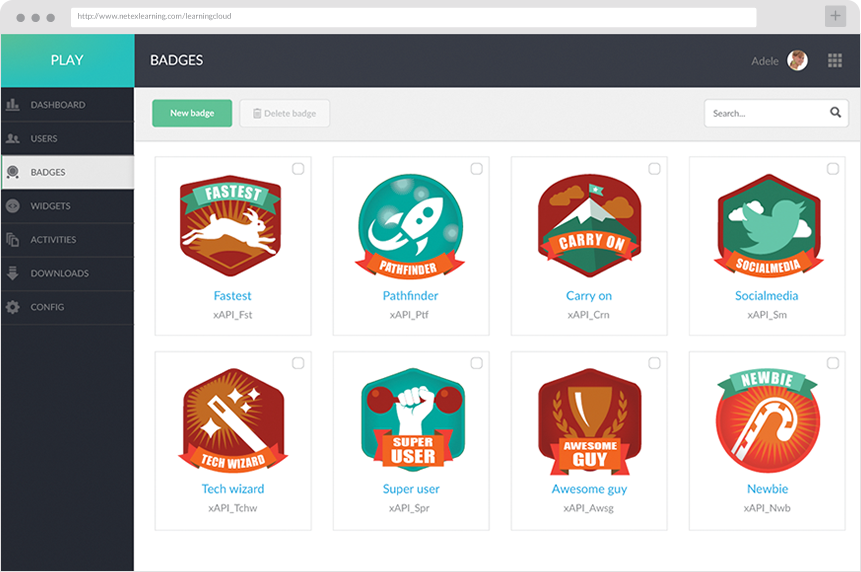
5 Important Steps to Ensure Your Design System is Successfully Adopted Across Your Organization
- Product Design /
- Product Management /
- Product Team Culture /
Design systems are becoming essential to managing digital products and experiences across large organizations. A design system is a set of reusable components, patterns, guidelines, and assets that work together to create cohesion across products. This includes elements like logos, colors, icons, UI patterns, code components, and design principles.
The benefits of a design system are huge. They improve design and development efficiency by enabling reuse of common elements. This accelerates work and keeps experiences consistent for users across a company’s suite of products. Design systems also facilitate collaboration between teams like design, product, development, and marketing by establishing a common language and set of standards.
However, creating and adopting a design system across an organization is challenging. It requires upfront strategic planning and cross-functional buy-in. Without thoughtful design and change management, attempts to implement a design system often fail and simply create “shelfware” that no one uses.
This article outlines the 5 critical steps companies should take to successfully implement a design system across their organization. Following these strategic moves will set up your design system for effective adoption and long term, maintainable success across products.
1) Define Your Design Strategy
Fundamentally, without a commonly shared perspective of how design affects your business and vice versa, your plans for implementing a design system are almost certain to fail. Formulating a design strategy at the onset of a project is imperative to successfully achieve your objectives. Strategy establishes metrics and criteria to measure the progress of different milestones and phases. It enables fine-tuning when it is necessary; realigning your team.
A well-constructed design strategy will account for:
- Understanding how your business affects design
- Understanding how your customer affects design
- Establishing design rules of engagement
- Defining your design system approach
- Creating the right design team
To punctuate the gravity of defining your design strategy, consider the following relevant anecdote:
Jim is a product manager working with design teams composed of both internal staff and external contractors across the country and globe. His goal is to keep digital product progress on track despite working with a variety of stakeholders across the organization. His biggest frustration is the internal politics. Many departments act like sovereign nations that are either at odds or not talking with one another.
Does this sound familiar? This is not as uncommon as you may believe. Having a well defined design strategy can help create a common understanding and basis for shared language around design and associated needs and can help facilitate better communication across teams.
When defining design principles as part of your strategy, focus on crafting principles that provide guiding lights for design decisions. Strong design principles are memorable, inspirational and help align team efforts. Some examples of good design principles could include:
- Focus on simplifying workflows and interactions, especially for first-time users
- Leverage familiar and consistent patterns and components across all products
- Enable efficiency through clear information hierarchy and intuitive navigation
- Treat edge cases thoughtfully by providing appropriate affordances and messaging
- Make key actions prominent and effortless to generate delight
- Exercise restraint and thoughtful use of color, animation and decorative elements
Establishing principles like these upfront creates North Star goals for designers to orient around when making decisions, no matter how large or small. They encapsulate overarching priorities for the design system and provide guiding tenets for maintainers to reference when vetting contributions and changes.
It’s also beneficial to outline clear, measurable goals that align to business objectives. For example, goals could include:
- Reduce design inconsistencies by 50% across all digital products within the next 6 months
- Decrease design rework by 30% year-over-year
- Increase designer productivity by 20% by enabling reuse of existing design patterns and components
- Accelerate developer onboarding ramp up time by 2 weeks through well-documented components
- Increase NPS or CX metrics by 15% by providing a more consistent user experience
- Reduce duplicate issues logged in bug trackers by 40% through consistent component usage
Setting quantifiable goals like these provides tangible targets to work towards during the design system implementation. They also enable easier tracking of success metrics and progress over time. Goals will vary based on current pain points and business objectives, but defining them upfront is key to focusing your design system efforts.
2) Educate Your Organization
Following the definition of your design strategy comes an oft-overlooked step for its success – how it is rolled out, and how it becomes integrated within organizations. It’s one thing to create a design system that becomes the source of truth for all things design, but it is equally essential to educate everyone on why it exists and what purpose it ultimately serves.
One of the benefits of creating a coded design system is that it can be adapted and augmented to include onboarding cues including education and training modules. There is an inherent complexity with the creation of a design system. But, the ability to access information independently across different types of audiences could be a real game changer. Particularly, in large organizations that are striving to increase adoption while simultaneously reducing overhead in the onboarding process.
It doesn’t have to be a boring or a staid experience. Gamification can be leveraged to create excitement and keep audiences engaged. Providing badges or other fun incentives for those progressing through the experience can create an enticing element to the process.

Example of Badging for Employee Onboarding. Source: Staffbase
When creating training and educational content, develop buyer personas for your key audiences like developers, designers, product managers, etc. Outline their goals, motivations, background knowledge, learning preferences, and pain points. Then craft customized content and examples tailored to each persona’s needs. For instance, focus developer training on code documentation, component APIs, and contribution workflows. For designers, emphasize guidelines, best practices, and tools for finding and using existing patterns. Product managers may need more high-level training on how the design system impacts roadmaps and prioritization. Customizing content for each audience ensures more relevant, engaging training.
You can also leverage varied educational formats to engage different audiences. Short animated videos can provide lively overviews accessible to all. Interactive tutorials allow hands-on learning by letting users navigate components and try out examples. Design jams and workshops facilitate collaborative problem-solving and generating ideas for new components. Mixing up learning formats appeals to different preferences and ensures continued mindshare.
3) Align Your Plan to Scale
Both you and your organization are responsible for creating a plan to address your current needs in design systems. It is also imperative to have conscientious foresight of the long-term goals; for your company itself and the consequent effects pertaining to design systems as your company grows and scales. This is particularly crucial with small-to-mid-sized companies where growth and scale are inevitable.
The most effective way to address inevitable factors is to determine if your organization has effectuated alignment with your chosen methodology for scaling and growing. This is just as important as defining a design strategy — organizational alignment is key to business growth and success. It will become a major driver for implementation of an appropriately sized design system. A system that accommodates the needs of your organization both today and in the future.
Gaining alignment will help:
- Define product strategies and roadmaps
- Develop a strategic understanding of target markets (customers/users needs) and evolving trends
- Work across teams to define, design, and develop solutions
- Drive decisions around prioritization, solutions, functionality, and growth
- Develop supporting product KPIs and analysis of how they impact business priorities
- Build and nurture world-class product teams. Provide mentorship, inspiration, regular guidance, and remove obstacles that impede performance of people, processes and systems

Jon Hensley, CEO of Emerge, has written an entire book on the topic of Alignment
In addition to design and product teams, gather input from marketing when aligning your design system. They can share insights into branding needs, campaign design, content workflows, and other touchpoints. Involve marketing early on to ensure the design system complements broader brand and messaging efforts across the organization.
4) Consult Your Entire Design Team
This should be a no-brainer, but your organization’s design team is a critical driver behind design system success. It isn’t only about creative directors or art directors. What is important to note here is that the entire design team should be a collective and collaborative part of the process when it comes to its definition and creation. Some companies are more inclusive than others when it comes to this process, but as any organization knows – ideas and solutions come from many places. Start with your creative and art directors, but also ensure you get a fresh perspective by talking to the very people who will be utilizing the design system the most across a diverse spectrum of needs on a daily basis.
Can designers work on files locally, or do assets need to live in the cloud? How does the design team operate when sharing resources and contributing towards ideas together? Are designers working individually or as part of a team? Answers to these questions can provide a better understanding of how specifically the design system can accommodate the most pressing needs of its primary user base.
When soliciting feedback from designers, send out a survey with questions to uncover pain points and requirements. Example open-ended questions:
- What are your biggest frustrations with our current design process and tools?
- What design elements do you frequently reuse or wish you could reuse more?
- What new components or patterns would be most valuable to you?
You can also include rating scale questions like:
- Rate the efficiency of finding and using existing design patterns (1-5 stars)
- Rate the consistency of designs across different products/teams (1-5 stars)
And multiple choice questions:
- What is your biggest need? (Reusable components, better collaboration, more consistency, other)
- How often do you reuse existing patterns? (Never, rarely, sometimes, usually, always)
Surveying designers this way provides quantitative data and qualitative insights to inform priorities for the design system.
When consulting your design team, also be sure to include developers and engineers. They can provide valuable insights into technical considerations like component APIs, documentation needs, and feasibility of implementation. Solicit their feedback on workflows, documentation, and any pain points integrating designs.
5) Solicit Feedback to Accommodate Other Audiences
While design teams benefit the most from the creation and implementation of a well-defined design system, other varied audiences also benefit significantly in the process. Building a common shared language that breaks down silos and empowers all individuals to articulate their ideas helps everyone navigate the communication of your design strategy. This is especially important when it comes back to the anecdote referenced earlier. There is not any license to make arbitrary decisions when a design system is in play.
Designers and developers are key to creating the design system, but don’t forget to consult other roles early on. Gathering feedback from sales, support, executives and more provides complementary perspectives. Though they may not use the system directly, they can share valuable insights into company-wide needs and strategic alignment.
To facilitate this, seek and solicit feedback from a diverse spectrum of stakeholders in your organization when creating and developing the design system. It may need to adapt further to accommodate specific needs, but the benefits are huge. This can be performed with user testing, specifically moderated user testing, which can help reveal valuable insights and feedback.
Consider the following internal audiences when conversations about design and processes are conducted:
- Leadership – Speak with them from a high-level strategic perspective.
- Marketing – Ask about their needs that fluctuate often.
- Creatives – Help them understand and learn a shared design language and system.
- Developers – Set them up for success when critically tasked with taking design and making it functional.
Can you speak to them and allow them to understand how to contribute effectively in a design conversation vs proffering up whatever feels “right in the moment”? When planning a design system, get feedback from each of these teams. The more information you have about needs and requirements, the better and more ‘right-sized’ the solution will be.
Defining Success For Your Design System One Step at a Time
Creating a design system does not have to be daunting, but it will require thoughtful planning and execution. The challenge with most organizations is a lack of time to do this real justice. Taking the time to do it right is a necessary first step. The second step involves assembling the right team to embrace this challenge and ensure its success. Some organizations have the right teams to do this, others may not have the right players to be able to effectively execute the challenges. Embarking on something of this magnitude is always substantially more fruitful with a knowledgeable partner. If you or your team need further consultation we’re here to help.